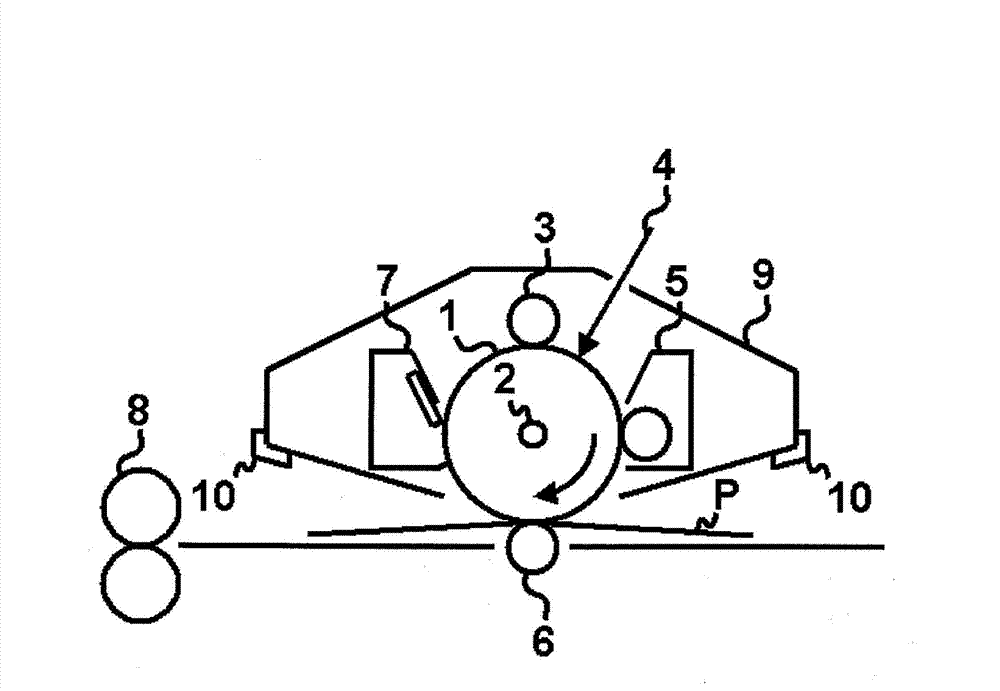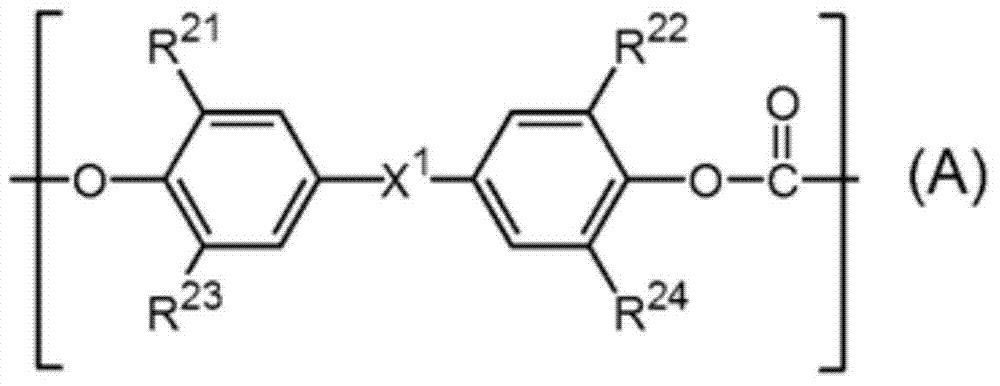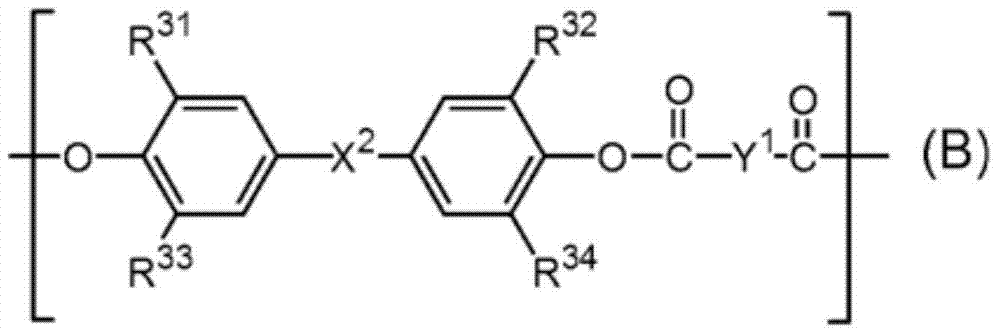Electrophotographic photosensitive member, process cartridge and electrophotographic apparatus
A technology of electrophotography and photosensitive components, which is applied to the equipment of the electric recording process using the charge pattern, the electric recording process using the charge pattern, optics, etc., and can solve the problem of the reduction of sensitivity, the change of the potential of the bright area, and the white turbidity of the surface layer. and other problems, to achieve the effect of reducing the initial friction coefficient and suppressing the change of bright area potential
- Summary
- Abstract
- Description
- Claims
- Application Information
AI Technical Summary
Problems solved by technology
Method used
Image
Examples
Embodiment 1
[0157] An aluminum cylinder having a diameter of 24 mm and a length of 261.6 mm was used as a support (conductive support).
[0158] Then, using 10 parts of SnO 2 Coated barium sulfate (conductive particles), 2 parts of titanium oxide (pigment for resistance adjustment), 6 parts of phenolic resin (binder resin), 0.001 part of silicone oil (leveling agent), and 4 parts of methanol and 16 parts of methoxy A mixed solvent of propanol was used to prepare a coating solution for a conductive layer.
[0159] The coating liquid for a conductive layer was applied on the support by dip coating, and solidified (thermally cured) at 140° C. for 30 minutes, thereby forming a conductive layer having a film thickness of 15 μm.
[0160] Then, 3 parts of N-methoxymethylated nylon and 3 parts of copolymerized nylon were dissolved in a mixed solvent of 65 parts of methanol and 30 parts of n-butanol, thereby preparing a coating liquid for an intermediate layer.
[0161] The coating liquid for an...
Embodiment 2-6
[0175] Each electrophotographic photosensitive member was manufactured and evaluated in the same manner as in Example 1 except that the type and content of Compound γ in Example 1 were changed to those shown in Table 4. The results are shown in Table 13. As in Example 1, the electrophotographic photosensitive member in Comparative Example 1 was used as an electrophotographic photosensitive member for comparison.
Embodiment 7
[0177] An electrophotographic photosensitive member was produced and evaluated in the same manner as in Example 1 except that the drying temperature and time during the formation of the charge transport layer in Example 1 were changed to 145° C. and 60 minutes. The results are shown in Table 13. As in Example 1, the electrophotographic photosensitive member in Comparative Example 1 was used as an electrophotographic photosensitive member for comparison.
PUM
| Property | Measurement | Unit |
|---|---|---|
| Diameter | aaaaa | aaaaa |
| Length | aaaaa | aaaaa |
| Thickness | aaaaa | aaaaa |
Abstract
Description
Claims
Application Information
 Login to View More
Login to View More - R&D
- Intellectual Property
- Life Sciences
- Materials
- Tech Scout
- Unparalleled Data Quality
- Higher Quality Content
- 60% Fewer Hallucinations
Browse by: Latest US Patents, China's latest patents, Technical Efficacy Thesaurus, Application Domain, Technology Topic, Popular Technical Reports.
© 2025 PatSnap. All rights reserved.Legal|Privacy policy|Modern Slavery Act Transparency Statement|Sitemap|About US| Contact US: help@patsnap.com



